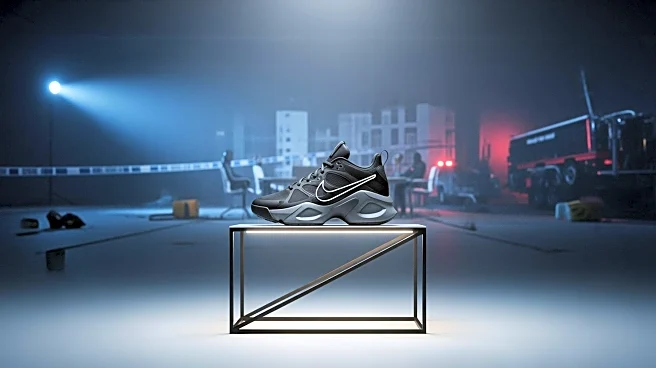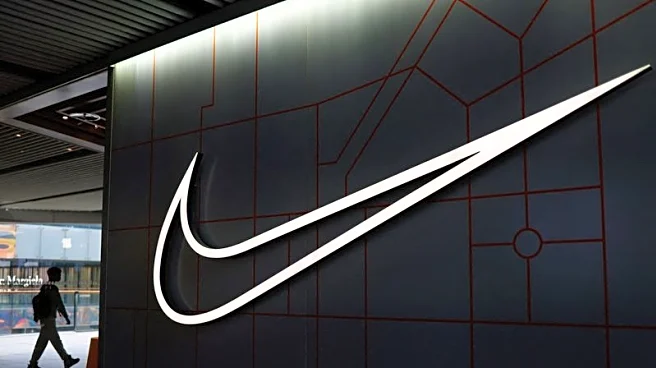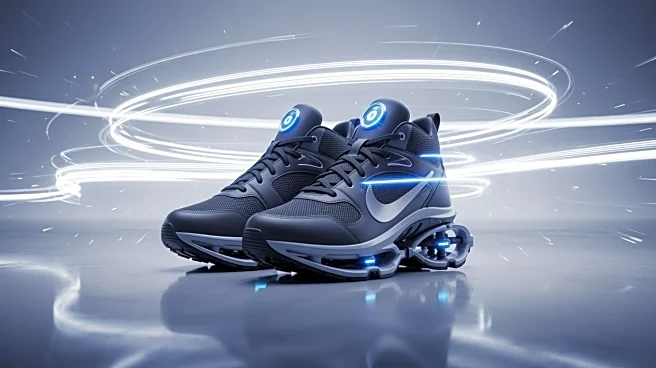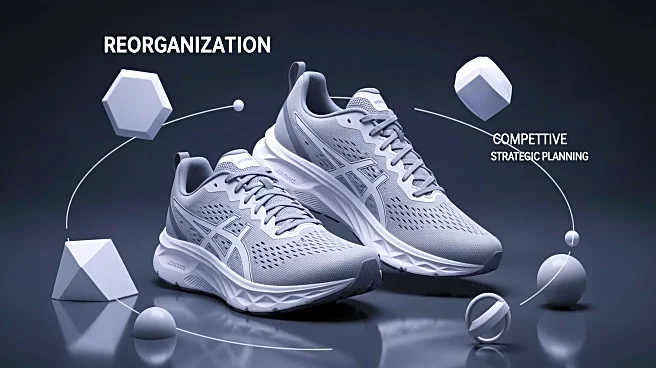What's Happening?
Nike is undergoing a significant innovation drive under the leadership of Phil McCartney, the newly appointed chief innovation, design, and product officer. McCartney, who has been with Nike for nearly
three decades, is tasked with revitalizing the company's stalled development engine. This initiative comes in response to a $5 billion revenue loss last year and a six-quarter decline in revenue on a currency-neutral basis. Nike's shares have also dropped by 8.7 percent this year. McCartney is focusing on accelerating product releases, with some items launching as early as 12 months ahead of schedule. Among the new innovations are the Nike Mind shoes, designed to calm athletes by targeting pressure points, and the Air Milano jacket, which allows wearers to adjust temperature levels. The most ambitious project, Project Amplify, aims to create a powered footwear system to enhance walking and running distances. These efforts are part of a broader restructuring led by CEO Elliott Hill, who has shifted 8,000 employees to roles centered around specific sports.
Why It's Important?
Nike's innovation strategy is crucial for the company's turnaround efforts. The focus on developing new, athlete-centered products is intended to reignite consumer interest and drive sales. The success of these innovations could significantly impact Nike's market position, especially as it faces increased competition from brands like On and Hoka. The company's ability to deliver groundbreaking products will be key to reversing its revenue decline and restoring investor confidence. Additionally, the restructuring and focus on specific sports categories aim to streamline operations and enhance product offerings. Failure to achieve these goals could result in continued financial struggles and loss of market share.
What's Next?
Nike plans to continue its innovation efforts with a focus on preparing for major sporting events, such as the 2026 World Cup. The company is working on improvements across its global football footwear, apparel, and equipment lines. McCartney is also overseeing the reworking of Nike's running category to better compete with emerging brands. The success of these initiatives will be closely monitored by stakeholders, as they are critical to Nike's long-term growth strategy. Additionally, Nike's smallest label, Converse, is undergoing a reset of its Chuck Taylor sneaker line, aiming to benefit from Nike's R&D capabilities.
Beyond the Headlines
Nike's innovation push reflects broader trends in the sportswear industry, where technological advancements and athlete-focused products are increasingly important. The company's approach to innovation, which includes encouraging moonshot projects, is reminiscent of strategies typically seen in Silicon Valley startups. This shift highlights the growing intersection between technology and sportswear, as companies seek to leverage scientific research and data-driven insights to enhance product performance. Nike's efforts may also influence industry standards, prompting competitors to adopt similar strategies to remain competitive.












